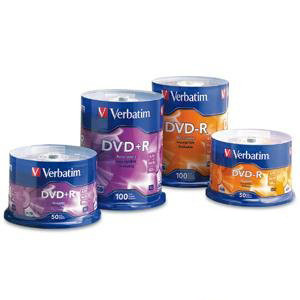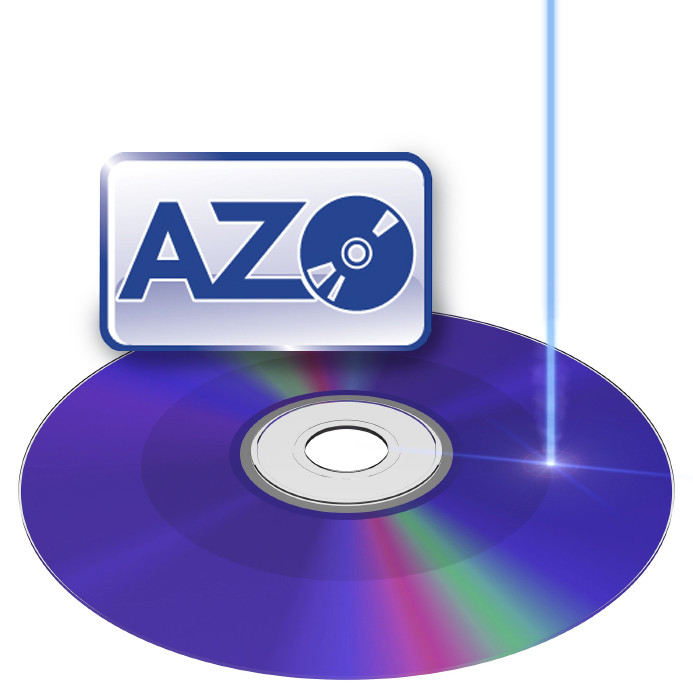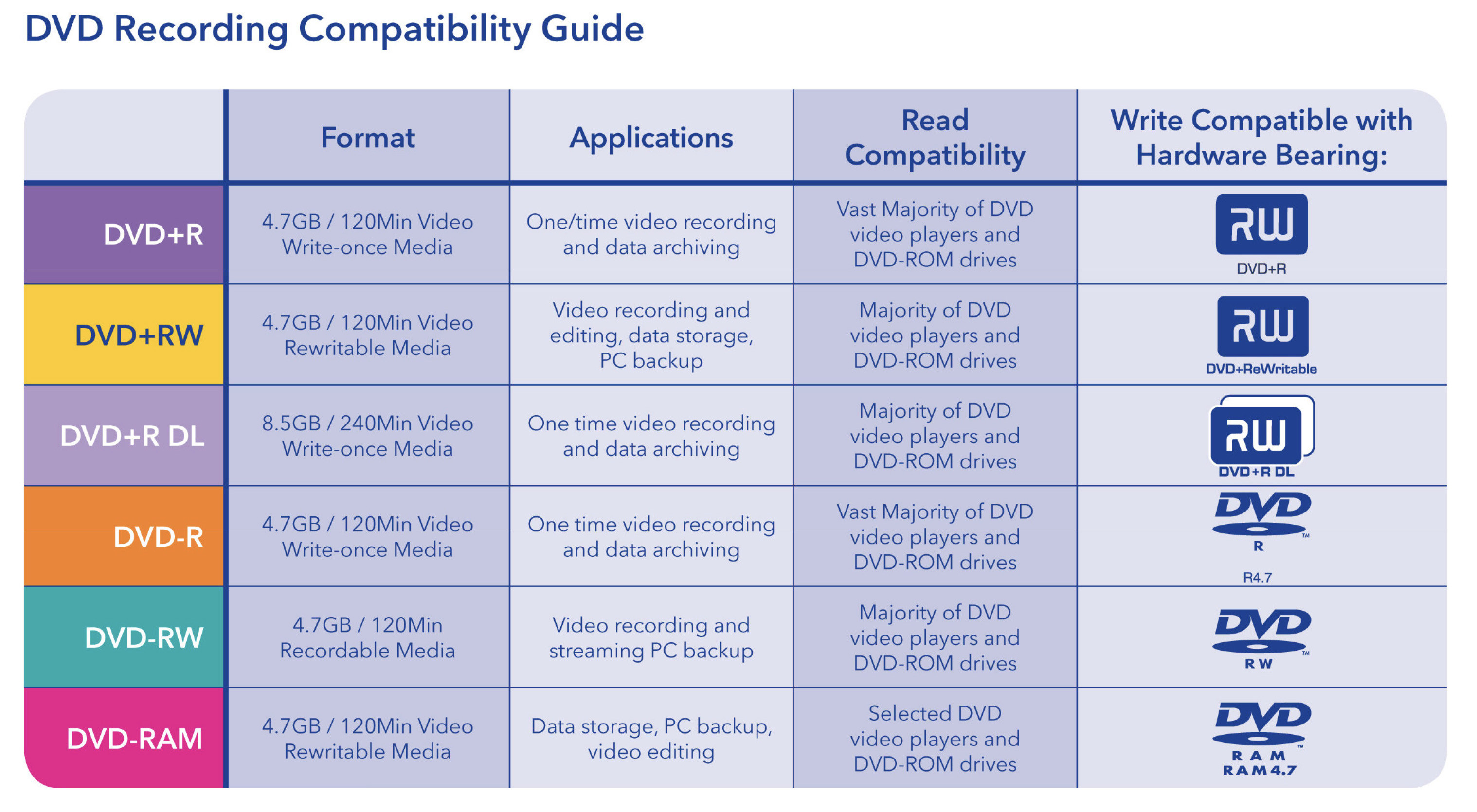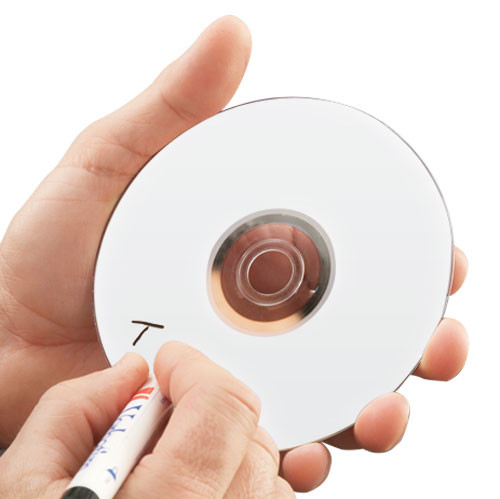
Verbatim AZO DVD Media
The Verbatim AZO recording layer gives our DVD media the competitive advantage—the patented coating delivers protection that lasts generations and provides ultimate resistance to UV light damage. That’s why Verbatim has been consistently recognized as providing optical media of the highest quality, reliability and compatibility. When drive manufacturers test their products for performance, they use Verbatim – so why wouldn’t you?

About Verbatim’s AZO Technology
Verbatim’s AZO recording layer is a unique and ultra-stable layer that strongly resists UV light, withstands high laser and rotation speeds and ensures compatibility with current DVD standards. Verbatim paid particular attention to the durability and light fastness of AZO, making it more stable than most recording dyes and the least affected by ultraviolet light.
AZO also offers high sensitivity for reliable high-speed recording and high reflectivity to eliminate read errors. The thinness of the recording layer is also critical. The thinner the layer, the higher the sensitivity and power margin; therefore, the better the DVD works for high-speed recording.
What does all this mean for you? Verbatim AZO technology translates into optical products that cost just a little more but are worth the slight difference. They are the discs you want, offering reliability, maximum read and write performance, especially with newer drives, and superior archival protection that lasts.
Features

AZO Technology
Provides superior performance and reliability, no matter what you are saving. This patented Mitsubishi technology is only available from Verbatim!

Quality
Verbatim manufactures our DVDs to meet our strict quality standards. We stand behind the quality of our products!

Compatibility
Optical drive manufacturers use our products to test their performance – so why wouldn’t you?
Things to Consider

What are the differences among the formats?
The differences are as follows:
DVD-R and DVD+R record data one time only, then the disc is only readable
DVD-RW, DVD+RW and DVD-RAM allow you to record and erase data multiple times
DVD-ROM only reads data; you cannot save to this disc

What does the plus and dash found in the format mean?
When DVD media technology was first developed, the plus and dash formats used different writing and reading specifications. Today, most DVD writers and readers now work with no noticeable performance differences between plus and dash formats. Check with your manufacturers’ suggestion of DVD format for the best compatibility—especially in older technology.

So how do I know which DVD to use?
Recordable DVD media is a natural choice for data archiving and backup. Choosing a DVD+R or DVD-R is ideal, as these write once discs prevent contents from being erased or mistakenly replaced. Also, to extend the life of your DVD disc, consider Archival Grade DVDs, which include a gold layer that is naturally resistant to corrosion and offers greater protection than standard silver discs. DVDs are also a great option simple data backup. Using DVD+RW/DVD-RW or DVD+RAM/DVD-RAM re-writable media allows content to be added and edited as the information changes.
Archive vs. Backup – What’s the Difference?

Archive
Archiving digital files simply means creating a safe storage place for important files. Archived data is often a permanent record that is moved, not copied, from one system to another and retained for a specified period of time. Archiving is an easy activity that preserves your data with just a little preparation.
It’s best to have several copies of your digital archives to store in different locations. That’s why Blu-ray discs, DVDs and CDs are a natural choice for archiving. They’re inexpensive, portable and easy to store. Make sure you are using the right disc--the disc name you use should have an R on the end meaning it is write once. A write once disc prevents you from erasing contents or mistakenly replacing data. Also, to extend the life of your disc, consider Archival Grade media that include a gold layer that is naturally resistant to corrosion offering greater protection than standard silver discs.

Backup
You probably leave your digital files tucked away on your computers’ hard drive—assuming they are safe. But what if your computer crashes or files get corrupted somehow? You might lose your digital photos, music and data. Forever. Good news—it is simple to backup your digital files and you can have working copies that are quickly accessible. Getting started is easy; it only requires a backup routine performed regularly and a safe place to store your digital files.
BD-RE, DVD-RW/-RAM and CD-RW discs are a great choice for quick back-ups. Re-writable media allows you to add and edit content. This works well for constantly changing information.

Storage
Whether creating an archive or a backup, always remember to store your discs in a sleeve or case. This will help ensure they are protected from fingerprints, accidental spills, dust and debris, protecting your files for decades to come.
The ideal way to store discs is in an upright (like a book) position in a CD/DVD/Blu-ray case. Ideally, discs should be stored in a location 60-75 degrees F with 35-50% relative humidity. Fluctuations in the storage area should not exceed +/- 2 degrees F. in temperature.